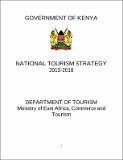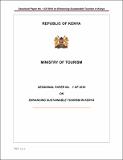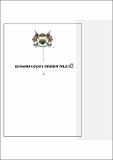| dc.description.abstract | This paper reviews tourism performance in Kenya in relation to the policy framework, focusing specifically on the absence of a shared vision and a long-term development strategy. Tourism is Kenya's third largest foreign exchange earner after tea and horticulture, and a major employer, accounting for 9% of the total wage employment in 1993. It contributes about 11% of the gross domestic product (GDP). After impressive growth in the 1960s-1980s, the sector experienced an unprecedented decline in the 1990s, particularly 1995-1998 when annual tourist arrivals and receipts dropped by 1.5% and 19.5% respectively. Promotion of mass tourism in 1965-1994 led to substantial increases in tourist numbers but drastic falls in per capita tourist expenditure, length of stay, hotel occupancy, hotel room rates and service quality. The tourism segment cannot be relied upon as a reliable source of revenue as carrying-capacity limits of many tourism resources appear to have been exceeded. The capacity of the country to offer luxury tourism, the current target, has been largely compromised by the effects of years of promoting mass tourism. Specifically, the capacity has been affected by the overcrowding at tourist sites, underdevelopment of tourist facilities, general insecurity in the country, poor infrastructure and environmental degradation... | en |




